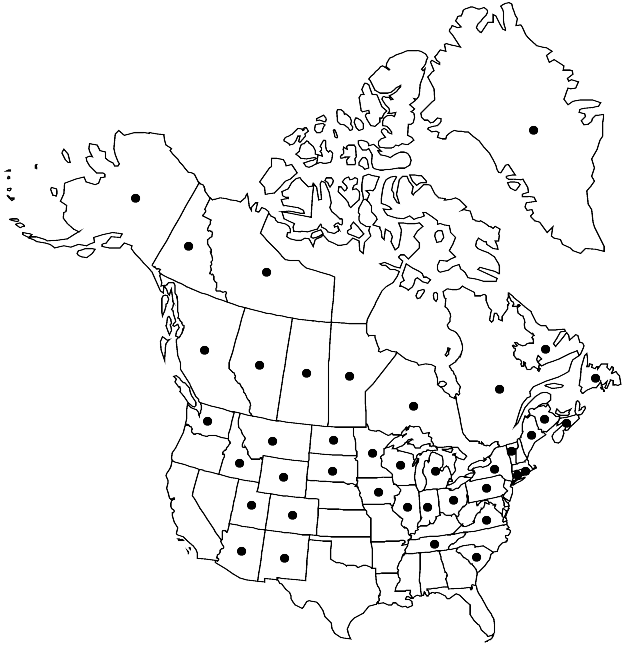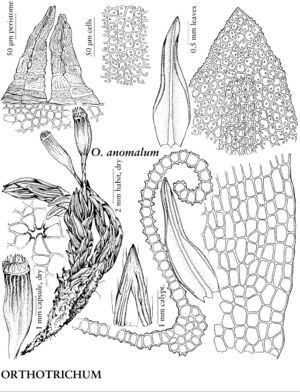Orthotrichum anomalum
Sp. Musc. Frond., 162. 1801.
Plants to 0.5 cm. Stem-leaves stiff, erect-appressed when dry, elongate-lanceolate, lanceolate, or narrowly ovatelanceolate, 2–3.8 mm; margins recurved-revolute to near apex, entire; apex acute, bluntly acute, or narrowly obtuse; basal laminal cells long-rectangular to rectangular, walls thin, sometimes slightly nodose; distal cells 9–14 µm, 1-stratose, papillae 1–3 per cell, conic, small. Specialized asexual reproduction absent. Sexual condition gonioautoicous. Seta 1–3 mm. Capsule exserted, oblong-cylindric to cylindric, 1.8–2.4 mm, usually 16-ribbed, 8 long ribs to mid capsule or beyond, 8 alternating short ribs, constricted below mouth when dry; stomata immersed; peristome usually single; prostome usually present; exostome teeth 16, rarely connate in 8 pairs, erect or spreading, finely horizontally striate proximally, vertically striate distally; endostome segments absent or rarely 8, not well developed, of 1 row of cells, short, smooth. Calyptra oblong-conic, smooth, hairs few-to-many, papillose. Spores 11–15 µm.
Habitat: Rock, especially limestone, base of trees, dead branches, dry rock faces in canyons
Elevation: low to high elevations (0-3000 m)
Distribution

Greenland, Alta., B.C., Man., N.B., Nfld. and Labr., N.W.T., N.S., Ont., Que., Sask., Yukon, Alaska, Ariz., Colo., Conn., Idaho, Ill., Ind., Iowa, Maine, Mich., Minn., Mont., N.Mex., N.Y., N.Dak., Ohio, Pa., R.I., S.C., S.Dak., Tenn., Utah, Vt., Va., Wash., Wis., Wyo., Mexico (Nuevo León), Mexico (San Luis Potosí), West Indies (Haiti), Europe, Asia, n Africa
Discussion
Orthotrichum anomalum has exserted capsules that are slightly constricted below the mouth and 1-stratose leaves. The most useful character in distinguishing this species is the exserted capsule with eight long ribs alternating with eight shorter ones. Stomata are found in the proximal half of the capsule.
Selected References
None.
